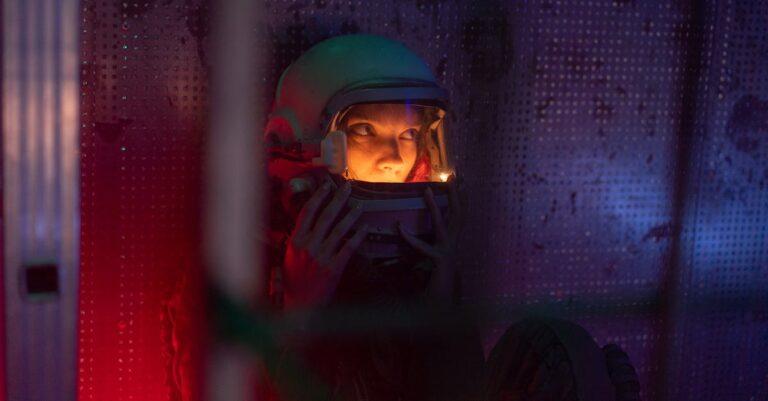
The air in the sublevel hummed with a frequency that made Lena’s teeth vibrate. She adjusted her gloves, the latex creaking like a dry hinge, and stared at the grid of glass tubes lining the chamber. Each contained a human figure, suspended in a pale blue fluid that shimmered like oil under mercury. Their limbs moved in slow, deliberate arcs, as though swimming through thickened time.
“You’re early,” said a voice behind her. Lena didn’t turn. She knew the cadence—flat, precise, the way a scalpel cuts through flesh without hesitation. Dr. Voss stood at the edge of the room, his lab coat unbuttoned to reveal a black t-shirt stretched over a frame that had long since stopped needing food. His eyes were on the tubes. “They’re responding to the stimulus.”
Lena stepped closer. The fluid in one tube rippled, and the figure inside—female, mid-thirties, hair cropped short—raised an arm. The motion was too smooth, too synchronized, as if preprogrammed. “What’s the baseline?” she asked.
“Neural oscillations at 12.7 hertz. Stable.” Voss’s fingers brushed a console, and the room’s lights dimmed. The tubes glowed faintly, casting blue veins across the concrete floor. Lena’s pulse quickened. She’d seen the data, but this—this was different. The figures weren’t just reacting; they were… aware. “Why don’t they speak?” she asked.
Voss hesitated. It was the first time she’d heard that pause, that tiny crack in his voice. “They don’t need to.” He turned, and for a moment, his reflection in the glass showed something else—flickers of movement, like static on a TV screen. Lena blinked. It was gone.
The next morning, Lena found a note tucked under her door. No signature, just three words: *They’re listening*. She crumpled it, then unfolded it again. The paper smelled faintly of ozone, like the air before a storm. When she looked up, the hallway was empty.
That night, she returned to the sublevel. The doors were unlocked. Inside, the tubes glowed brighter, their occupants’ movements more fluid. Lena approached the nearest one. The woman inside met her gaze, and Lena felt a tug in her chest, as if something deep in her bones recognized the face. “Who are you?” she whispered.
The woman’s lips moved. No sound came out. Lena pressed her palm against the glass. It was warm. “You’re not real,” she said, but the words felt hollow. The woman’s eyes widened, and suddenly, Lena saw *herself* in the reflection—pale, wide-eyed, trembling. The glass rippled, and the woman’s mouth formed a word: *Run*.
Lena stumbled back. The lights flickered. A low hum filled the room, growing louder, more urgent. She turned to leave, but the doors had sealed. The tubes pulsed in unison, their blue light intensifying. The woman’s voice echoed in her mind, not spoken but *felt*: *They’re not what you think*.
Lena ran. The corridor stretched endlessly, walls closing in. She didn’t know if she was fleeing the facility or herself. Behind her, the hum became a scream. Then—silence.
The next day, Lena’s files were gone. Her lab coat hung in the locker, empty. The sublevel doors remained sealed. Voss was nowhere to be found. But in the dead of night, the tubes still glowed, and the figures still moved—slowly, deliberately, as if waiting.
And somewhere, in the quiet spaces between heartbeats, a new voice whispered: *Welcome*.


